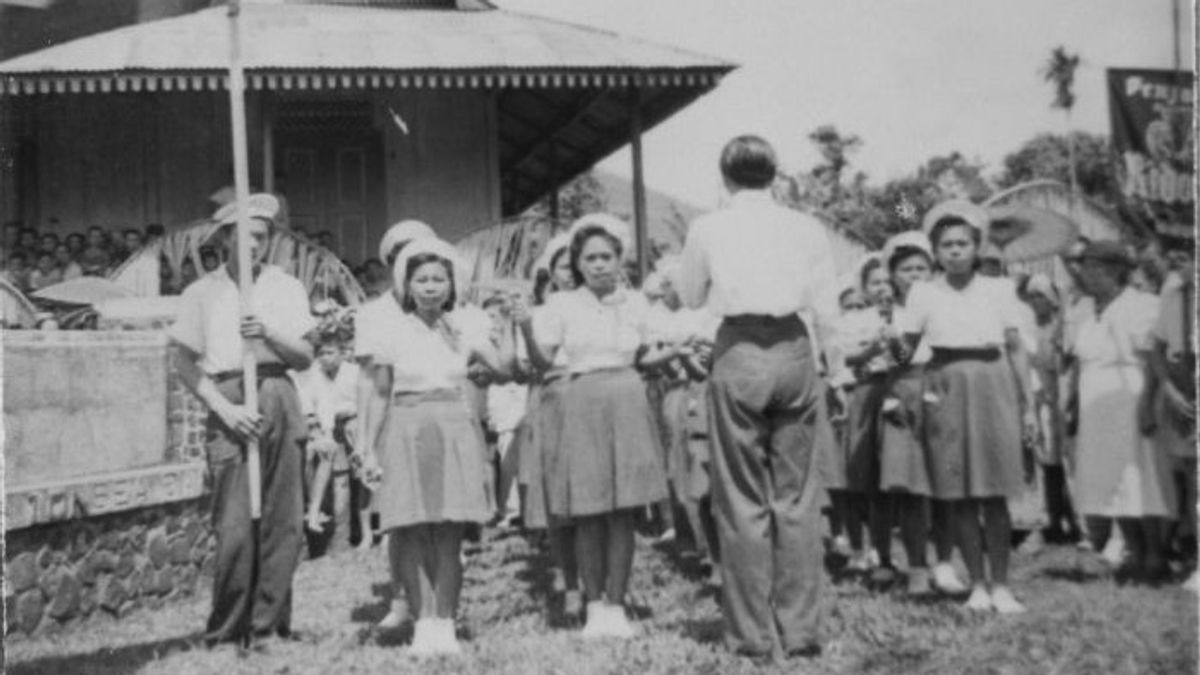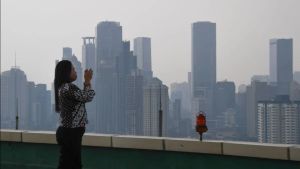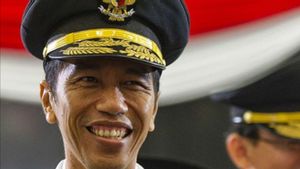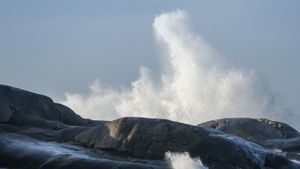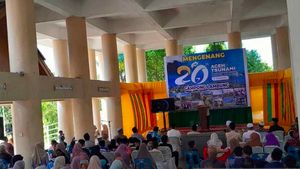JAKARTA - What was the most sticky thing about a visit to Manado, North Sulawesi? The beauty of Bunaken Marine Park? The magic of Mount Mahawu Peak? Or is it just conquering the challenging rapids on the Nimanga River? Maybe so. But, in truth, Manado has always been more than nature. The strength of culture is another charm. The typical dance of the Minahasa tribe, the Maengket Dance, for example.
Maengket dance was born long before Indonesia's independence. In the seventh century, to be precise, when the Minahasa people became familiar with the agricultural system. Maengket dance, which was originally only shown as a form of gratitude for every harvest, now continues to transform. Maengket dance is now played at various events, from traditional ceremonies, welcoming ceremonies, to being displayed in art performances.
According to historical research, the origin of the word "maengket" is explained in many versions. One of them is said to have originated from the word "enket", which in the local language means lifting the heel of the foot up and down. The addition of the word "ma" itself means dancing in an up and down motion. Another version says Maengket starts from the word mahaengket. Maha means doing work, while cranking means lifting, sticking or connecting.
Quoted from Kemdikbud.or.id, the community then interpreted Maengket Dance as a place to gather while singing while dancing, holding hands, forming a circle with a distinctive movement: taking a step forward, taking a step back with your hands swinging to the rhythm of the song sung together.
Generally, Maengket Dance is performed in groups involving 12 male and female dancers in pairs. The interesting thing about Maengket Dance is how the dancers move while singing under the direct leadership of the chapel which is played by a woman. Maengket dance is often interpreted as a form of equality. With the command of women, all dancers move in harmony accompanied by the melodious drumming music. The sound of kolintang to tifa creates harmonization.
In the Maengket Dance, the women wear costumes in the form of a kebaya with a long cloth typical of North Sulawesi and hair with a bun. Meanwhile, the men wore long sleeves and trousers. Their heads are crowned with a typical local head covering. Along with the times, the dancers began to be creative with the castings and colors of their costumes.
Maengket Dance Chapters
In its development, Maengket Dance consists of three stages. First, the rice harvest (maowey kamberu). Second, the stage of going up to a new house (marambak). Meanwhile, the third stage is the socialization of young people (lalayaan).
Maowey Kamberu. This chapter discusses how the Minahasa people open land, plant, harvest rice, and how they give thanks for the abundant rice harvest. Typically, dances are presented in a special formation, with the main formation characterized by male dancers lining up to form a semicircle.
The same is done by female dancers who line up in a semicircle right in front of the men. The formation builds a meaning of the high values of mutual cooperation between them.

Marambak. This chapter deals with how the Minahasa people build new houses. Starting from the choice of wood to form a strong house. The Maengket Marambak dance is held as a celebration of gratitude for their new residence. Typically, the dances are performed in a circle formation. The dancers form a circle by holding on to the shoulders of the other dancer in front of them.
Lalayaan. This chapter describes the interactions of the Minahasa people and the life of young people. This chapter also describes how tribal youths seek mates. This dance formation is usually divided into two groups of lines. There are lines that dance while holding hands in a circle formation, there are also those who face each other between male and female dancers.
See directly the Maengket Dance
Some time ago, VOI had the opportunity to watch the Maengket Dance live. With the theme Live as Friends of Everyone, Maengket Dance was held at the Grand Ball Room Integrity Convention Center (ICC), Kemayoran, Central Jakarta. The event was held by the Kawanua Family Kurukunan (KKK) as a gathering place for the indigenous Minahasa people - Tou Kawanua - overseas.
The Maengket dance in the event was held with a modern concept. Even so, not a single philosophy of life of the Tou Kawanua people is left behind. They are grateful for mutual cooperation and cleverness to be shown proudly as their identity.

The modern Maengket dance succeeded in hypnotizing the four thousand people present. They are not only wise in presenting art, but also submitting to the full value of education taught by Tou Kawanua's ancestors.
Finally, the views of people who see Maengket Dance, can be said to be similar to those expressed by Alfred Russel Wallace in his book entitled Archipelago Archipelago. Wallace said:
Minahasa people have a special character. They are calm and gentle, obedient to a government they recognize as superior, and can quickly adopt a more advanced civilization.
The English, Chinese, Japanese, Arabic, and French versions are automatically generated by the AI. So there may still be inaccuracies in translating, please always see Indonesian as our main language. (system supported by DigitalSiber.id)
